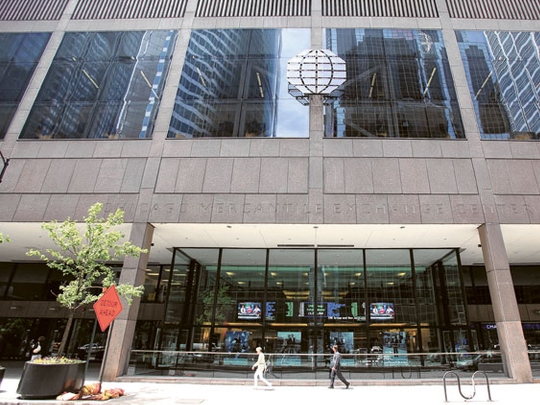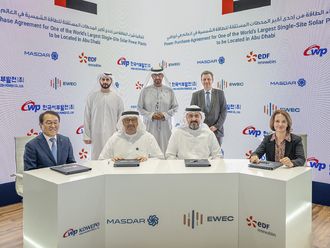
Dubai CME Group, the biggest US derivatives exchange operator, doubled its stake in the Dubai Mercantile Exchange (DME) to 50 per cent yesterday as the Oman Investment Fund, the sultanate's sovereign wealth fund, raised its stake to 29 per cent.
CME's move is widely regarded as the derivative major's strategy to establish a new crude oil futures benchmark for the Middle East and Asia.
"By committing CME Group's resources and know-how to DME's increasingly well-received product set, participants in the Middle East and Asia will be able to access transparent pricing and risk management products as global energy markets focus ever further eastward," Bryan Durkin, CME Group Chief Operating Officer and Managing Director of Products and Services, said.
Shares diluted
As part of the restructuring, a subsidiary of Dubai Holding will retain 9 per cent, and 12 per cent will be held on a non-voting basis by strategic investors including Vitol, Shell, JP Morgan, Morgan Stanley, Goldman Sachs and Concord Energy.
The Oman Investment Fund has been a key partner of the DME and Oman crude is a key element in the DME sour futures contract.
"DME's development into a prominent venue for price discovery will prove to be of significant strategic and financial value for the oil markets," Hassan Al Nabhani, Chief Executive Officer of Oman Investment Fund, said in a statement.
The DME has been marketing the Oman contract as a benchmark for markets east of Suez, arguing that much of the world's crude comes from the region and should be priced in the Middle East. Its target is for the Oman contract to eventually challenge established global benchmarks such as Brent and WTI (West Texas Intermediate).
In Western markets, benchmark prices are principally based on trading on regulated exchanges such as WTI on the CME and Brent on the Intercontinental Exchange. However, east of Suez benchmark prices (Dubai, Minas) have historically been assessed by journalistic agencies, based on over-the-counter transactions. The launch of DME Oman in 2007 brought an exchange-traded benchmark to the region.
Dubai's declining production and lack of liquidity in partials (paper trade) make it difficult for agencies to provide accuracy in their price assessments. DME Oman prices simply reflect actual trading. DME Oman's daily settlement is just the weighted average of the price at which contracts linked to physical are bought and sold during a defined time period.
"We strongly believe the Omani crude contract is an outstanding proxy for the Middle Eastern crude. It makes a lot of sense. It has good correlations," Gary Morsches, managing director of energy for the CME Group, said.
DME Oman is already the sole benchmark for Dubai and Oman crude, the two primary markers for east of Suez markets. The adoption of DME Oman by other regional national oil companies will further enhance its legitimacy as a regional benchmark.
"We welcome the continued commitment of our partners. With liquidity in the flagship Oman crude oil futures contract steadily growing and physical delivery reaching new heights in 2011, this recapitalisation positions the DME to enter the next phase of development for existing and future customers seeking to manage price risk for crude oil markets east of Suez," Ahmad Sharaf, chairman of the DME, said.












